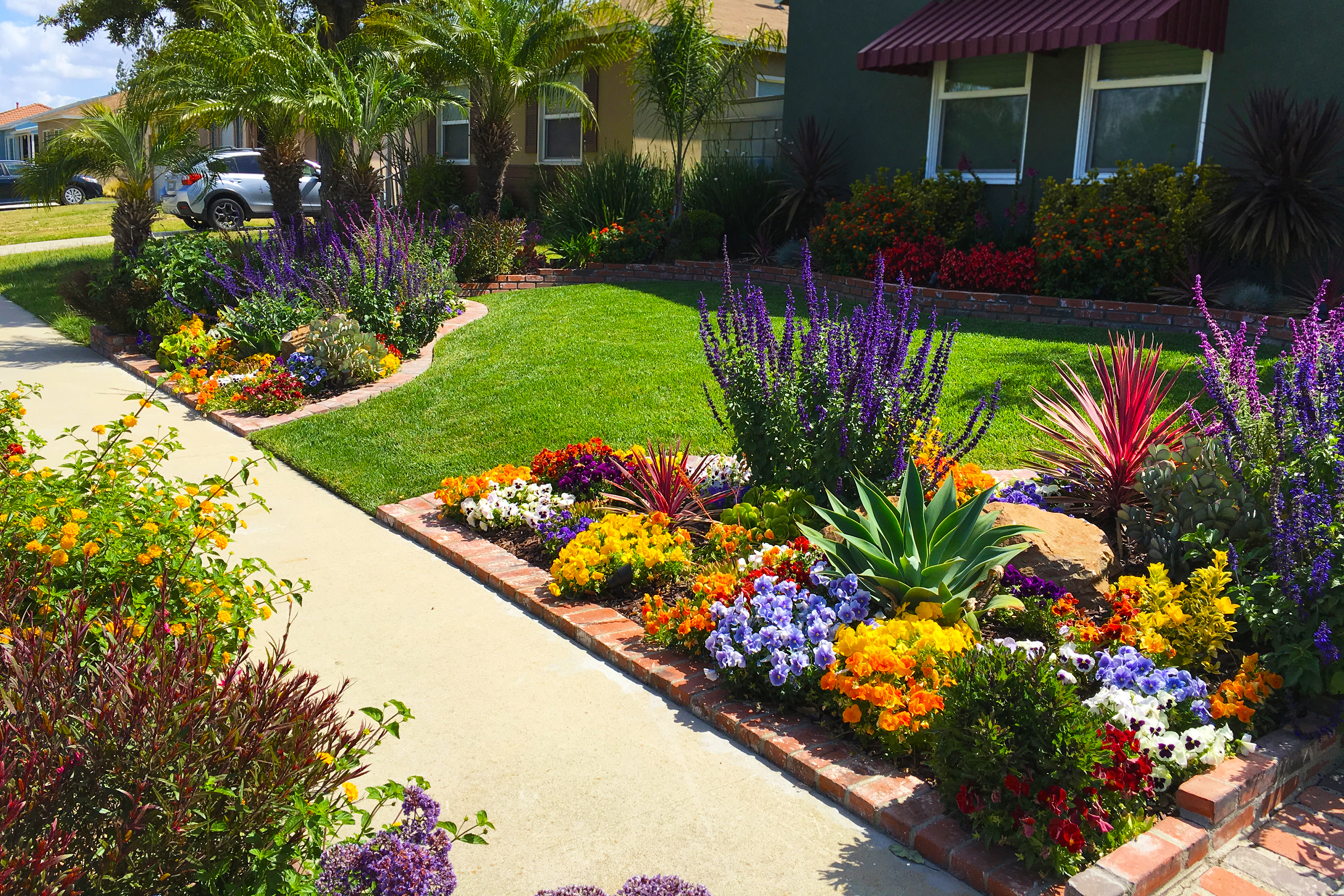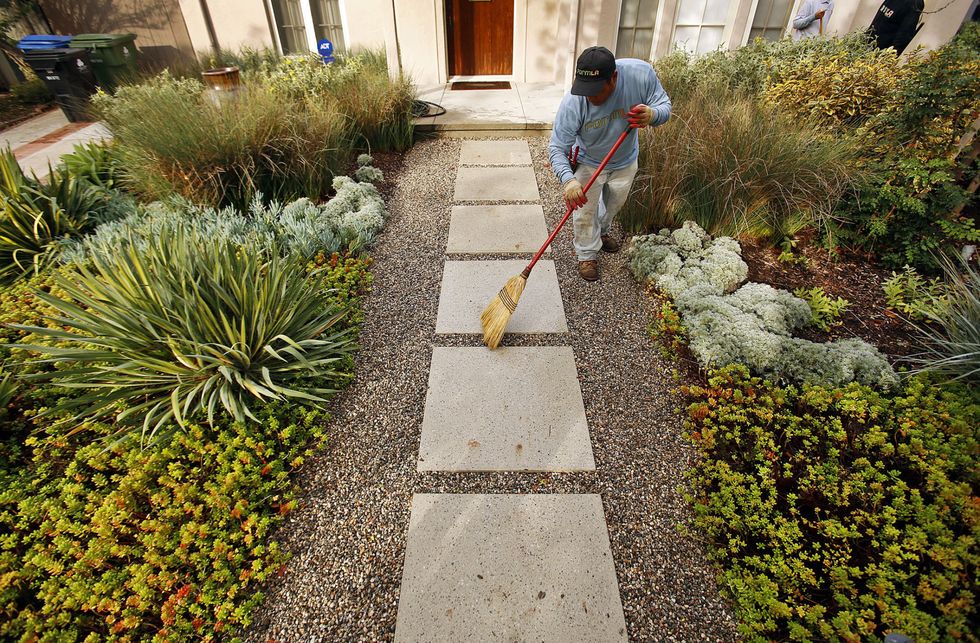Update Your Residential Or Commercial Property with Custom Palm Desert Landscaping Solutions
Update Your Residential Or Commercial Property with Custom Palm Desert Landscaping Solutions
Blog Article
A Comprehensive Overview to Creating and Implementing Effective Landscaping Solutions
The art and science of landscape design extend beyond plain aesthetic appeals; they involve a thoughtful assimilation of design principles, ecological stewardship, and useful execution. What techniques can one utilize to ensure these landscapes not only thrive yet additionally flourish in consistency with their surroundings?

Comprehending Landscape Layout Principles
One might wonder what foundational elements add to reliable landscape design. At its core, effective landscape style rests on several crucial principles that direct the setup and choice of elements within a space. These concepts include unity, rhythm, balance, and proportion, each serving to develop a harmonious exterior setting.
Unity describes the cohesive relationship among various components, guaranteeing that they collaborate cosmetically and functionally. Balance can be achieved via asymmetrical or balanced arrangements, allowing the landscape to feel steady and inviting. Proportion involves comprehending the scale of components in connection with each other and the surrounding setting, promoting visual consistency and comfort.

Analyzing Your Outdoor Room
Before executing the principles of landscape design, an extensive evaluation of your exterior space is important. This initial examination assists define the extent of your landscaping job and makes certain that your design straightens with the one-of-a-kind attributes of your building. Begin by analyzing the measurements of your space, taking precise measurements to recognize the available area for numerous elements such as paths, patios, and gardens.
Following, observe the existing functions of your landscape, including topography, dirt top quality, and water drainage patterns. These aspects considerably affect plant option and positioning. Furthermore, examine the sunshine direct exposure throughout different locations throughout the day, as this will impact the kinds of plants that flourish in your yard.
Take into consideration the microclimates developed by structures, trees, and various other challenges, as they can affect temperature and moisture degrees. Finally, keep in mind of any kind of existing plants or hardscape components that you wish to maintain or get rid of. This extensive evaluation lays the foundation for a reliable and well-informed landscape design option, guaranteeing that your design is not just aesthetically pleasing yet likewise practical and lasting for many years ahead.
Sustainable Landscape Design Techniques
These methods not only advertise environmental balance but likewise boost the functional and aesthetic value of a landscape. Applying effective irrigation systems, such as drip watering, minimizes water waste and guarantees that plants receive appropriate moisture (Palm Desert Landscaping).

An additional efficient method is the calculated placement of hedges and trees to helpful resources supply natural windbreaks and color, therefore decreasing power expenses (Palm Desert Landscaping). Rain yards can be integrated into the landscape design to handle stormwater overflow successfully, filtering system contaminants prior to they enter rivers
Selecting the Right Plants
Picking the right plants for your landscape is vital to achieving both aesthetic appeal and environmental harmony. The process starts with an understanding of your regional environment, dirt conditions, and the particular microenvironments within your landscape. Analyzing factors such as sunshine direct exposure, dampness levels, and existing plants will help you pick plants that grow in your unique setup.
Take into consideration integrating native plants, as they are well-adapted to local conditions, call for much less maintenance, and support neighborhood wildlife. In addition, picking a diverse range of species can boost biodiversity while reducing the danger of illness and bug outbreaks. It is important to assess the development practices, growing periods, and seasonal shades of possible plants to develop a dynamic and natural landscape.
Moreover, consider the planned use the area; for example, if the location will experience high foot web traffic, select resistant ground covers. By thoughtfully picking plants that straighten with both your ecological needs and visual objectives, you can create a sustainable landscape that not only improves your residential property but likewise adds favorably to the bordering ecological community.

Implementation and Upkeep Approaches
As soon as the appropriate plants have been picked for your landscape, the emphasis changes to effective execution and ongoing upkeep approaches. Successful installation begins with appropriate website prep work, which consists of soil testing to determine nutrient levels and pH, followed by modifying the additional hints dirt as needed. Thoroughly organize plants according to their growth practices and light requirements, making certain ample spacing to promote healthy and balanced development.
Watering is a vital element of execution. Establish a watering schedule that thinks about the certain demands of each plant types, adjusting for seasonal modifications. Utilizing drip watering systems can boost water effectiveness and minimize overflow.
Upkeep approaches should be carried out to ensure the durability and vigor of your landscape. Regular tasks consist of weeding, mulching, and trimming to control growth and protect against illness. Fertilization ought to be carried out based on dirt examinations, giving the required nutrients without over-fertilizing.
Monitoring for bugs and diseases is vital; early detection can prevent significant damage. Finally, seasonal modifications to maintenance routines, such as winterizing perennials and preparing for springtime growth, will guarantee that your landscape stays healthy and visually appealing year-round.
Final Thought
In final thought, effective landscaping services require a detailed understanding of layout principles, precise analysis of outside rooms, and the application of lasting techniques. The selection of appropriate plant types plays an essential duty in boosting aesthetic allure and ecological resilience - Palm Desert Landscaping. Successful implementation and recurring maintenance additionally make sure the long life and vitality of landscapes. By incorporating these aspects, landscapes can be transformed into beautiful, useful atmospheres that promote biodiversity and add positively to community health.
One might wonder what fundamental components contribute to efficient landscape layout. At its core, successful landscape design pivots on several essential principles that assist the plan and selection of elements within a room.Selecting the right plants for your landscape is vital to attaining both visual charm and ecological harmony. It is necessary check my source to evaluate the development behaviors, flowering periods, and seasonal shades of possible plants to produce a cohesive and vibrant landscape.
When the best plants have been chosen for your landscape, the focus moves to reliable implementation and continuous upkeep methods.
Report this page